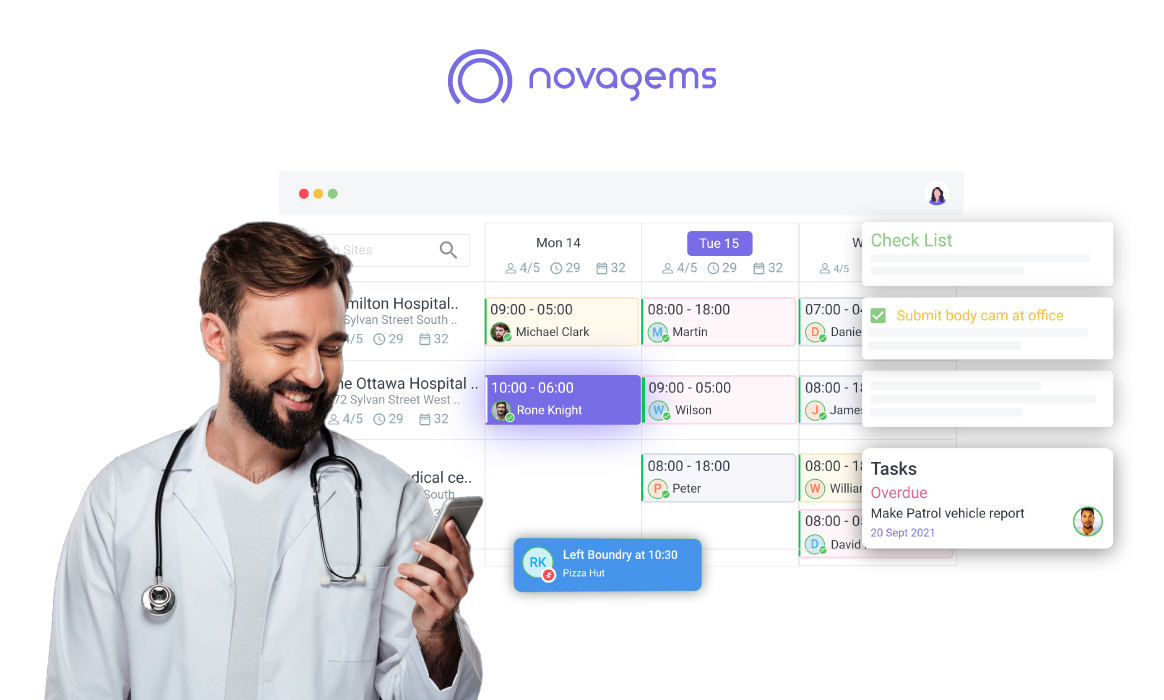Common Challenges the Healthcare Industry is Facing Today
Wed, Mar 20, 2024
Read in 6 minutes

The healthcare industry is one of the most crucial sectors globally, ensuring the well-being and health of populations. However, it faces several significant challenges today. The healthcare industry has always faced some challenges that they need to overcome. With Covid pandemic, we have learnt to appreciate the primary care provider a bit more, but are we aware of the new challebges they face? Current challenges in the healthcare industry that the healthcare companies face needs to be looked at. This will help us understand them better. And if you are new in the industry, it will help you understand and prepare for them.
Let’s explore the primary issues and understand how they impact the healthcare landscape.
-
Workforce Shortages in Healthcare
One of the most pressing challenges in the healthcare industry is the shortage of skilled professionals. This includes doctors, nurses, and other healthcare workers. The demand for primary care providers is growing, but the supply isn’t keeping up.
Why is this happening?
- Aging Population: As the population ages, the need for healthcare services increases, leading to higher demand for healthcare professionals.
- Burnout and Job Stress: Many healthcare workers face burnout due to long hours and high-stress environments.
- Education and Training: It takes years of education and training to become a healthcare professional, creating a gap between demand and supply.
Strategies to Address Healthcare Workforce Shortages:
- Improving Working Conditions: Providing better support, reducing workloads, and offering competitive salaries.
- Incentive Programs: Scholarships and loan repayment programs for medical students.
- Utilizing Technology: Telehealth can help bridge the gap by providing remote consultations, reducing the strain on physical resources.
-
Rising Healthcare Costs
Healthcare costs are escalating rapidly, posing a significant challenge for both providers and patients. Rising costs can make healthcare services inaccessible to many.
Key Factors Contributing to Rising Healthcare Costs:
- Technological Advancements: While beneficial, new technologies and treatments often come with high price tags.
- Administrative Costs: Complex billing and insurance processes add to overall expenses.
- Pharmaceutical Prices: The cost of medications is continuously rising.
Strategies to Reduce Healthcare Costs:
- Focus on Preventive Care
- Why It Works: Prevents diseases, reducing the need for expensive treatments.
- Examples: Regular check-ups, vaccinations, and screenings.
- Efficient Resource Management
- Why It Works: Reduces waste and unnecessary expenses.
- Examples: Better inventory management and using energy-efficient equipment. This includes managing the workforce staffing too.
- Adopt Value-Based Care
- Why It Works: Rewards providers for keeping patients healthy, focusing on quality over quantity.
- Examples: Bonuses for reducing hospital readmissions and managing chronic diseases effectively.
- Increase Use of Generic Medications
- Why It Works: Cheaper than brand-name drugs, reducing prescription costs.
- Examples: Promoting generics for common conditions like high blood pressure.
- Tele health Services
- Why It Works: Lowers infrastructure and transportation costs.
- Examples: Video calls for routine check-ups and mental health counseling.
- Health Information Technology
- Why It Works: Streamlines processes, reduces paperwork, and avoids duplicate tests.
- Examples: Electronic health records (EHRs) for easy information sharing.
- Community Health Programs
- Why It Works: Prevents diseases and reduces emergency care needs.
- Examples: Free health screenings and educational workshops.
3. Advancements in Medical Technology
While advancements in medical technology are beneficial, they also present challenges. Integrating new technologies into existing systems can be complex and costly.
Examples of Advancements:
- AI and Machine Learning: For diagnostics and personalized treatment plans.
- Electronic Health Records (EHRs): Digitizing patient records for better accessibility.

Challenges:
- High Costs: Implementing and maintaining advanced technologies require substantial investment.
- Training: Healthcare professionals need training to use new technologies effectively.
- Integration: Ensuring new technologies work seamlessly with existing systems.
4. Regulatory and Compliance Issues
Healthcare providers must navigate a complex landscape of regulations and compliance requirements. These are essential for ensuring patient safety and quality care but can be burdensome.
Common Regulatory Challenges:
- HIPAA Compliance: Ensuring patient data privacy and security.
- Medical Billing and Coding: Adhering to regulations for insurance claims.
- Accreditation Requirements: Meeting standards set by various accrediting bodies.
Solutions:
- Investing in Compliance Software: Automating compliance tasks can reduce the burden.
- Regular Training: Keeping staff updated on the latest regulations.
5. Patient Data Security and Privacy
With the digitalization of healthcare, protecting patient data has become paramount. Cybersecurity threats pose significant risks to patient privacy.
Common Security Threats:
- Data Breaches: Unauthorized access to patient information.
- Ransomware Attacks: Cybercriminals encrypting data and demanding ransom.
- Phishing: Fraudulent attempts to obtain sensitive information.

Measures to Ensure Data Security:
- Robust Encryption: Protecting data with strong encryption methods.
- Regular Audits: Conducting security audits to identify vulnerabilities.
- Employee Training: Educating staff about cybersecurity best practices.
6. Access to Healthcare Services
Access to healthcare remains a critical issue, particularly in rural and underserved areas. Many people struggle to find a primary health care provider or afford necessary treatments.
Barriers to Access:
- Geographical Location: Rural areas often lack healthcare facilities.
- Financial Constraints: High costs deter people from seeking care.
- Insurance Coverage: Lack of adequate insurance coverage.
Improving Access to Healthcare:
- Expanding Telehealth: Telehealth can provide remote consultations, reducing the need for travel.
- Community Health Programs: Local initiatives to provide basic health services.
- Subsidized Healthcare: Government programs to make healthcare affordable.
7. Mental Health Crisis
Mental health issues are rising, exacerbated by the pandemic and socio-economic factors. Addressing mental health is crucial for overall well-being.
Challenges in Mental Health Care:
- Stigma: Social stigma prevents many from seeking help.
- Shortage of Mental Health Professionals: Limited availability of trained professionals.
- Access to Services: Lack of mental health facilities in many areas.
Addressing the Mental Health Crisis:
- Awareness Campaigns: Reducing stigma through education and awareness.
- Integrating Mental Health with Primary Care: Providing mental health services within primary health care settings.
- Telehealth: Offering remote mental health consultations.

9. Tele health Adoption
Telehealth has gained prominence, especially during the COVID-19 pandemic. It offers a solution to many challenges but also comes with its own set of issues.
Benefits of Telehealth:
- Convenience: Patients can consult healthcare providers from home.
- Reduced Costs: Lower operational costs for healthcare providers.
- Accessibility: Reaches patients in remote or underserved areas. And improve patient care.
Challenges of Tele health:
- Technology Access: Not all patients have access to the necessary technology.
- Regulatory Hurdles: Different regulations across regions.
- Quality of Care: Ensuring telehealth provides the same quality as in-person visits.
Promoting Telehealth:
- Improving Internet Access: Ensuring reliable internet access for all.
- Standardizing Regulations: Creating uniform regulations for telehealth.
- Educating Patients: Helping patients understand how to use telehealth effectively.
Conclusion
The healthcare industry faces numerous challenges, from workforce shortages and rising costs to advancements in technology and regulatory issues. If you can learn how to address healthcare workforce shortages you can focus on providing better services to patients. As we navigate these hurdles, the goal remains clear: to provide better health outcomes for all. A strong health care industry is the foundation of a strong economy.
Get a Free Trial
Sign up For Newsletter
Latest Blog Posts
Get Started
Start being productive & grow your business
with Novagems




